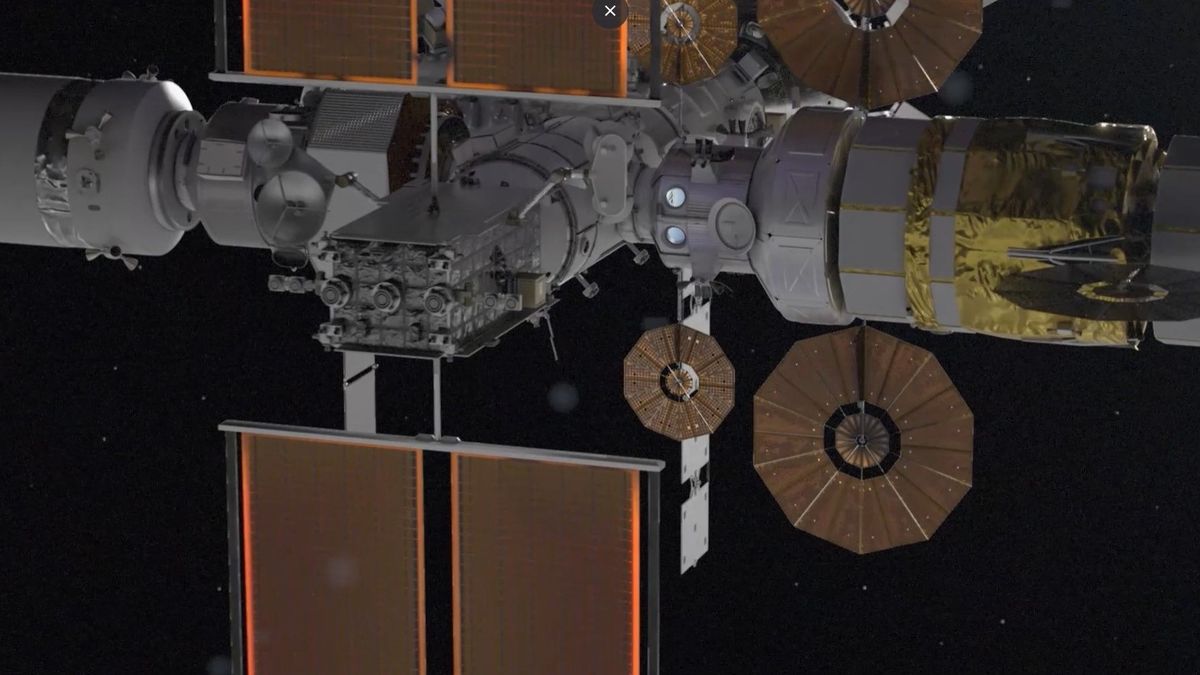NASA has released its detailed 3D animation Gateway Project, First space station to orbit the Moon for deep space missions.
The one-and-a-half-minute video shows its blocks and structural elements from various angles with the darkness of space in the background.
Starting with the Artemis IV mission in 2028, the first humans will make their home in deep space, where international teams of astronauts will live, conduct scientific research and prepare for missions to the lunar south pole at Gateway.
This artful computer-generated animation gives a stunning exterior tour of the gateway. Gateway components are referred to as:
– Power and Propulsion Element, which will make Gateway the most powerful solar electric spacecraft ever launched. The module harnesses energy from the Sun to power the space station’s subsystems and ionizes xenon gas to create thrust that maintains Gateway’s unique polar orbit around the Moon.
– HALO (Habitation and Logistics Outpost), a gateway command and control nexus providing communications between Earth and the lunar surface with the Lunar Link System provided by ESA (European Space Agency). HALO will hold life support systems, including exercise equipment and science payload banks.
– The Lunar I-Hop, which will be provided by ESA with hardware contributions from JAXA (Japan Aerospace Exploration Agency), will have environmental control and life support systems, bedrooms and a kitchen among other features.
– The Lunar View by ESA will have a power and propulsion element, cargo storage and refueling capabilities for large windows.
– Crew and science airlock, provided by the Mohammed bin Rashid Space Center in the United Arab Emirates, to transfer crew and hardware from inside the Gateway to the vacuum of space.
– Canadarm3 advanced external robotic system provided by CSA (Canadian Space Agency).
– A deep space logistics spacecraft carrying cargo to Gateway in support of Artemis missions. Gateway’s first science payloads will study solar and cosmic radiation, a poorly understood phenomenon that will be a major concern for people and equipment traveling in deep space, including Mars. The payloads seen in this video are ERSA (European Radiation Sensors Array), provided by ESA, attached to the Power and Propulsion Element, and HERMES (Heliophysics Environmental and Radiation Measurement Experiment Suite), led by NASA, attached to HALO. A third science radiation payload, the IDA (Internal Dosimeter Array), delivered by ESA and JAXA, will be inside HALO.
The video also shows the Orion spacecraft docked at the airlock for crew and science. Orion will carry the International Astronaut crew and three modules (Lunar I-Hab, Lunar View, and the crew and science airlock) to the Gateway space station.
Also included is a government-specified Human Landing System (HLS) that will carry astronauts to the South Pole of the Moon. SpaceX and Blue Origin are contracted to supply Starship HLS and Blue Moon HLS respectively.

